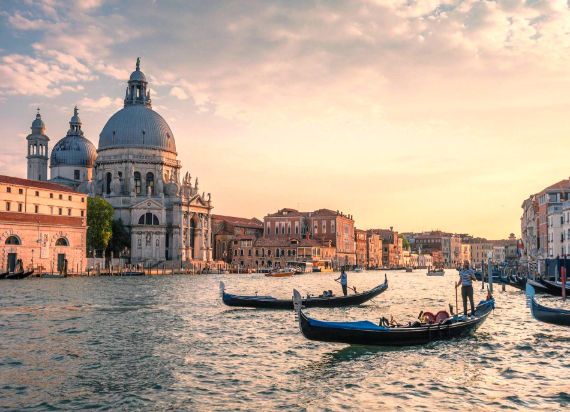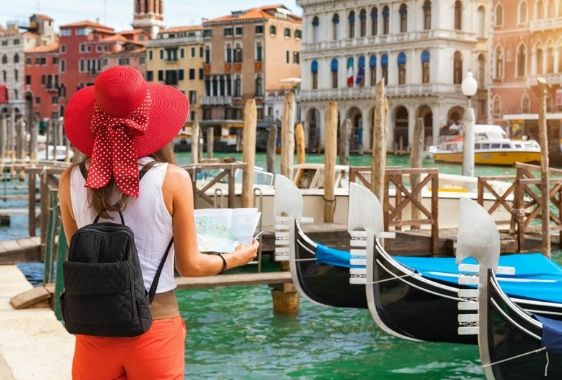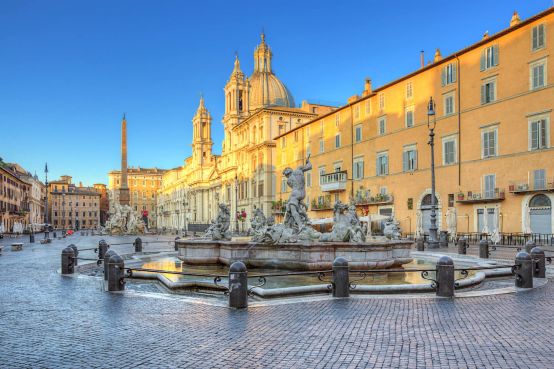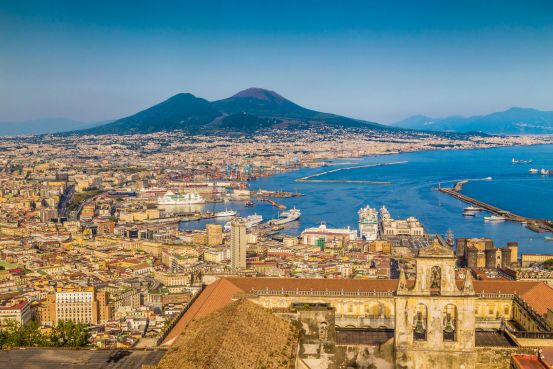It is a great place to stop and soak up the atmosphere and view of the Eternal City, and it is a famous focal point for tourists and locals, alike.
The Spanish Steps consist of 138 steps, which rise up a steep slope connecting the Piazza di Spagna at the base with the Piazza Trinità dei Monti and the Trinità dei Monti church at the top. It’s a beautiful view from the bottom and from the top.
The steps were built during 1723 – 1725 following a competition to design them in 1717 - which was won by an architect named Francesco de Sanctis. A French diplomat Francesco Di Sanctis financed them. They are a unique design involving a mix of curves, straight flights, terraces and vistas.
A cultural meeting place
In the 18th century, the steps became a meeting place for artists and poets alike. Perhaps they were drawn to the area because of its unique design. Even today, you can find a group of artists painting portraits of visitors. And as the steps start, on the right hand side, is the house where the English poet John Keats lived and died. It’s now a museum dedicated to his life that you will find a wealth of memorabilia of the age.
Since then, the steps have remained a meeting place of all types of people. In the 18th century, beautiful women lingered here hoping to be painted by the artists. This in turn attracted some of the most affluent residents of, and visitors to, Rome. Nowadays, as well as today’s artists, the steps are a breathtaking backdrop to tourists’ photographs.
Spanish Steps and the silver screen
The Spanish Steps have also made numerous appearances on the silver screen including in the 1950s film, Roman Holiday, starring Audrey Hepburn and Gregory Peck. It’s here their characters shared an ice cream on their famous Italian holiday. More recently the steps featured in the film version of the Talented Mr. Ripley, which starred Matt Damon.
Sights around the Spanish Steps
The sights around the Spanish Steps Rome are just as worthy of a visit. For instance, at the base of the steps is a rather unique looking fountain – or Fontana della Barcaccia - the Fountain of the Old Boat. It creates a fabulous photographic backdrop and it is said to be reminiscent of when Rome used to regularly flood, before the city walls were built. One of those occasions was in the 16th century when the Tiber flooded Piazza di Spagna with water reaching one meter high, and it left behind an old barge – which the fountain represents.
Rome’s Spanish steps are also home to Babington’s Tea Rooms. Originally set up in 1893 by two English residents of Rome – when it was only possible to buy tea in pharmacies. The rooms have been serving English tea for over 100 years.The Via del Condotti also leads off from the base of the Spanish steps and is home to some of Italy’s most famous fashion retailers – Gucci, Valentino, Benetton, Bulgari etc. If you head north from the Spanish Steps toward Piazze del Popolo you will find boutiques and shops that specialise in art and antiques.












Comments